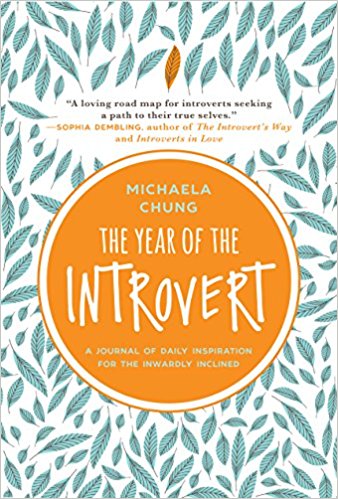
Spending time alone can be refreshing, especially if your energy tends to drain around people. But extended solo time can also create space for behaviors that don’t serve you. You may find yourself zoning out in front of a screen for hours, skipping meals, or letting your sleep schedule fall apart. Those patterns might feel harmless at first. Over time, they shape how your brain works, influencing how you respond to stress, make decisions, or even get out of bed in the morning.
Rewiring your brain for healthier solo habits is about paying attention to how you function when no one’s watching and making deliberate choices that help you feel sharper, calmer, and more balanced.
Let’s look at how your habits form, how your brain supports or resists change, and what you can do to create better routines while spending time alone.
How Habits Take Root in Your Brain
Habits aren’t just behaviors. They’re stored patterns that your brain uses to conserve energy. When you repeat something often enough, the brain builds shortcuts (called neural pathways) to help you do it faster, with less thought. This makes habits feel automatic.
Every time you complete a habit loop (cue → action → reward), the connection between the cue and the reward strengthens. Your brain learns that this behavior achieves a goal, even if the goal is only temporary comfort. That’s how something like scrolling endlessly or overeating can become your go-to after a stressful day.
Shortcuts themselves aren’t a bad thing. Your brain needs them to function efficiently. The real issue is what kind of behaviors are being turned into shortcuts. If the loop revolves around avoidance or overstimulation, your brain starts defaulting to those patterns, even when better options are available.
The Role of Your Brain’s Wiring in Solo Behavior
When you’re alone, your environment is simpler. No external pressure, no social feedback. That means your prefrontal cortex (the area responsible for planning and decision-making) has to do more heavy lifting. It guides you toward longer-term rewards instead of quick fixes.
But here’s the catch: the more often you give in to habits that offer immediate gratification (like staying in bed too long or bingeing videos), the more those patterns bypass the prefrontal cortex. They shift into automatic mode. The more they repeat, the stronger the connection becomes between cue and response.
That doesn’t mean your brain is stuck that way. Thanks to brain plasticity, it’s always remodeling itself based on what you do regularly. You can train it to form different associations. For example, if you start using short walks to regulate stress, your brain can rewire to expect that reward instead of sugar or screens.
Change happens when you repeat new actions with consistency. The brain doesn’t care about your intentions. It cares about repetition and feedback. That’s why changing solo habits starts with clear, manageable routines, ones your brain can learn and rely on.
What Mental Health Professionals Know About Habit Rewiring
Changing a habit sounds simple: stop doing one thing, start doing another. But the reality is more layered. If you’ve ever tried to stop a pattern and ended up repeating it a few hours later, you’ve experienced how persistent a habit loop can be.
Professionals who work in behavioral science, addiction recovery, or clinical therapy understand this well. Places like the apibhs.com and other reputable mental health facilities recognize that breaking unhelpful habits involves more than willpower. It often requires new strategies to deal with stress, fatigue, or internal pressure, especially when you’re alone with your thoughts.
Let’s say you’ve developed a pattern of checking social media whenever you feel overwhelmed. Removing the app won’t resolve the urge. The brain will still look for that hit of relief. Replacing that pattern with a healthier coping mechanism (like journaling or stretching) helps shift the brain’s expectation. But this only sticks if the reward feels meaningful and the action feels doable.
Mental health experts often encourage small, specific shifts instead of sweeping changes. You might adjust just one part of your routine, such as setting a timer to step outside for five minutes each afternoon, instead of trying to redesign your entire day. When the brain sees success, even at a small level, it starts to cooperate.
How Negative Thought Patterns Feed Bad Habits
Spending time alone creates more space for internal dialogue. And if your baseline thoughts lean negative, it’s easy to seek distractions that numb rather than confront those thoughts.
These negative thought patterns influence your behaviors. If your mind keeps telling you you’re not doing enough, you may procrastinate tasks just to avoid confirming that fear. Or if it says nothing matters, you might let daily structure collapse entirely.
The connection between thought and action happens through the brain’s limbic system. When you dwell on distressing thoughts, this system activates stress responses. Over time, that stress starts to weaken the prefrontal cortex, which you need for self-control and planning. A loop where feeling bad leads to doing less, which makes you feel worse.
Breaking this loop requires interrupting the connection between your internal critic and your automatic behaviors. You can start by identifying the voice of those recurring thoughts and assigning it less authority. Ask: ‘Is this thought useful?’ If it’s not, redirect with a task that engages your body or senses, like washing dishes or stepping outside.
Why Your Brain Resists Change (Even When You Want It)
There’s a reason why your brain favors comfort, even when comfort sabotages you. It’s designed to avoid unnecessary risk. Change, even positive change, requires effort and uncertainty. That’s interpreted as a threat at the biological level.
The amygdala plays a key role in this. It flags anything unfamiliar as a possible danger, which can make new habits feel harder than they are. That resistance is amplified when you’re alone, since there’s no one around to model a different behavior or help you reframe your reaction.
To work with that resistance, you need to make new habits feel familiar. That means starting small, repeating them in consistent ways, and attaching them to cues you already trust. If you always make coffee at 8 a.m., add a two-minute stretch before or after. Tie the new habit to something your brain already recognizes as stable.
This also connects to the brain’s pattern separation function, the ability to distinguish between similar experiences. If every attempt at behavior change has previously ended in failure or shame, your brain will associate all new efforts with those feelings. You have to give it a different experience. Let the new habit be so simple and consistent that it bypasses that threat response.
Strengthening Brain Health Through Better Routines
When you adjust your habits, you’re also influencing your brain health. Activities that support routine and emotional regulation improve how the brain handles stress, recovers from fatigue, and maintains focus.
Consistent movement boosts circulation to the brain and promotes the formation of new brain cells. Even moderate movement like walking or light yoga has been linked to improvements in cognitive function and emotional balance.
Sleep, hydration, and regular mealtimes also help stabilize the brain’s daily rhythms. These aren’t glamorous habits, but they affect how you think, feel, and respond to the world. When those needs are met, you’re less likely to fall into cycles of overstimulation or shutdown.
Your solo time becomes an opportunity to reset. With fewer outside demands, you have more space to experiment with routines that make sense for your energy level, preferences, and schedule.
How to Restructure Your Environment for Automatic Wins
The easiest way to shift behavior is to reduce friction between your intention and the action. This is about structure.
Let’s say you want to drink more water but keep forgetting. Leaving a full glass next to your laptop reduces the number of decisions between thought and follow-through. The fewer steps, the better.
Your brain creates associations between environment and action. If your bedroom is set up for rest (low light, no screens), it reinforces sleep. If your workspace includes a comfy blanket and snacks, it reinforces zoning out. Changing your physical cues helps steer your individual synapses toward more supportive behaviors.
Rethinking How You Spend Your Time Alone
Solitude doesn’t need to mean isolation. But it often becomes that when your habits lean toward passive consumption. You might watch, scroll, or game for hours, feeling busy without feeling better.
To break that cycle, you need to differentiate passive from active alone time. Active time involves input and output. Reading, writing, drawing, organizing, or building something engages your senses and brain systems beyond just observing.
They also help with pattern separation, allowing your brain to tell one moment apart from the next. This matters more than it seems. When days blur together, the brain has fewer anchors for memory and fewer opportunities to reflect on change. That contributes to low mood and stunted personal growth.
Make a list of low-effort, interest-based activities you enjoy (or might enjoy). When boredom hits, use that list instead of defaulting to screen time. You don’t need to be productive. You just need to engage in a way that keeps your mind responsive and your attention flexible.
Habit Friction: Why Old Patterns Linger
You might wonder why bad routines seem to reappear even after you’ve done the work to change them. It comes down to friction. Old habits have worn grooves in your neural network. They don’t need a lot of energy to reactivate.
New habits, in contrast, require deliberate effort. They’re less efficient at first. If you’re tired, stressed, or distracted, your brain will default to whatever pattern costs the least energy. That’s often the one you’re trying to replace.
This means your brain is doing what it’s built to do: conserve energy. To make the new behavior stick, reduce the effort it takes. Prepare in advance. Make it obvious. Link it to something familiar.
When you catch yourself falling back into old patterns, resist the urge to get self-critical. Guilt adds emotional resistance to trying again. Instead, acknowledge what triggered the fallback, reset your environment if needed, and rerun the new habit loop.
Tracking Progress Without Obsession
It’s easy to lose track of progress when change feels slow. That’s when people tend to give up because they can’t see it working.
Avoid relying on mood alone to measure success. Mood is inconsistent, especially in solitude. Instead, track visible actions. Did you journal today? Did you move your body? Did you stick to your wake-up time?
These simple check-ins reinforce agency. They also give your brain feedback. Every ‘yes’ you record strengthens the connection between action and reward. That feedback loop supports habit change at the neural level.
Avoid perfectionism here. You’re not trying to become optimized. You’re training your brain to associate your solo time with intentional living instead of automatic reactions.
What to Expect as Your Brain Rewires
At first, new routines might feel like effort with little payoff. That’s because the old neural pathways are still more efficient. You’re asking your brain to take a detour. It’s going to resist.
Over time, though, the new routes become smoother. They require less effort. The emotional discomfort lessens. You’ll start to notice fewer ‘what’s the point’ days and more neutral or grounded ones. That’s a sign that your brain is rewiring.
The change also spills over. Better sleep leads to better decision-making. Better eating patterns lead to better energy. Stronger emotional regulation leads to fewer impulsive behaviors. Your brain starts to support the version of you that shows up with purpose, even in silence.
Final Thoughts
Rewiring your brain is about strategy and consistency. You’re not fixing yourself. You’re building systems that work better for how your brain responds when it’s alone, unobserved, and unstimulated.
Pay attention to patterns. Watch how your brain reacts to rest, boredom, stress, and small wins. Use that information to shape your routines. Even if you’re the only one who sees them, those habits have the power to support better brain function, stronger emotional health, and steadier behavior.
Solo time can isolate you or it can restore you. The difference lies in what you do when no one’s watching. Rewiring your brain means giving yourself better defaults, so when your attention drifts or your energy dips, you return to something useful.
That’s how you turn silence into something that sustains you.










